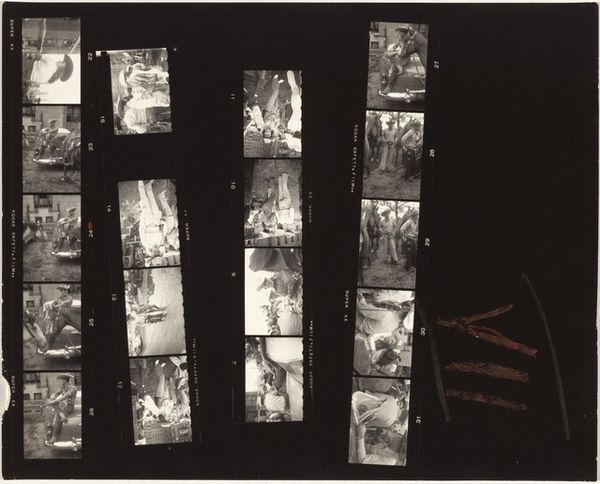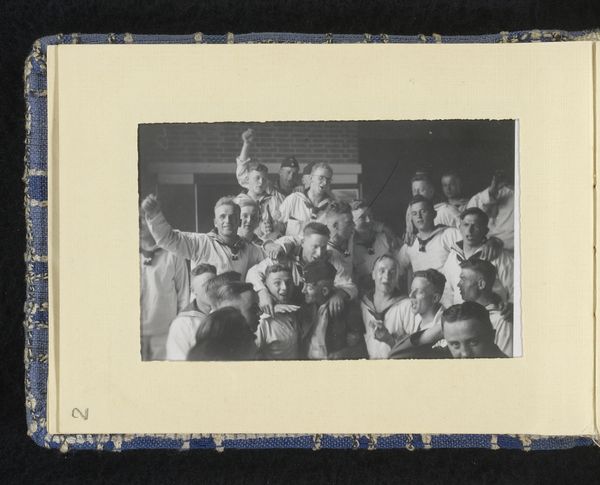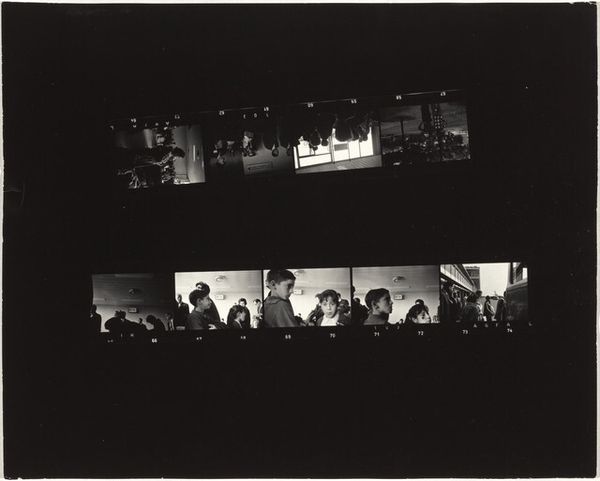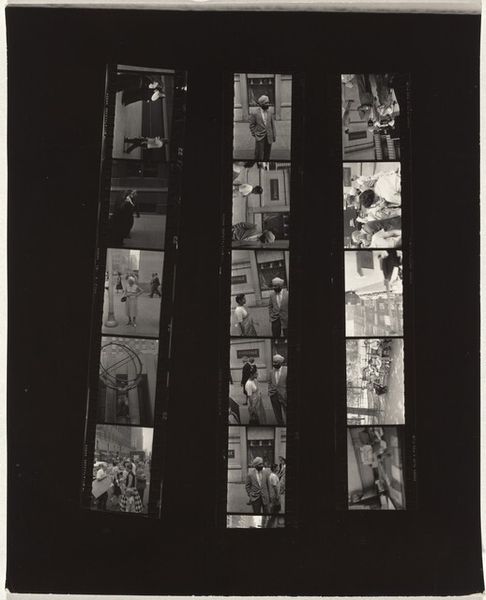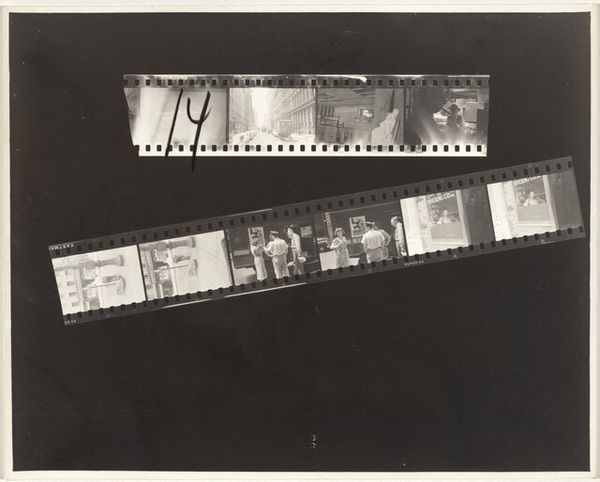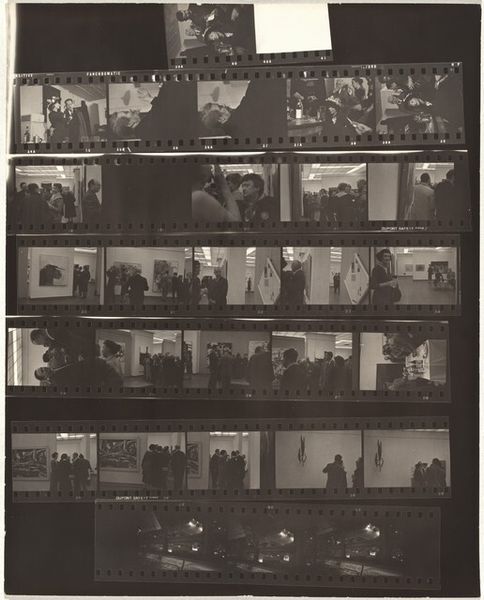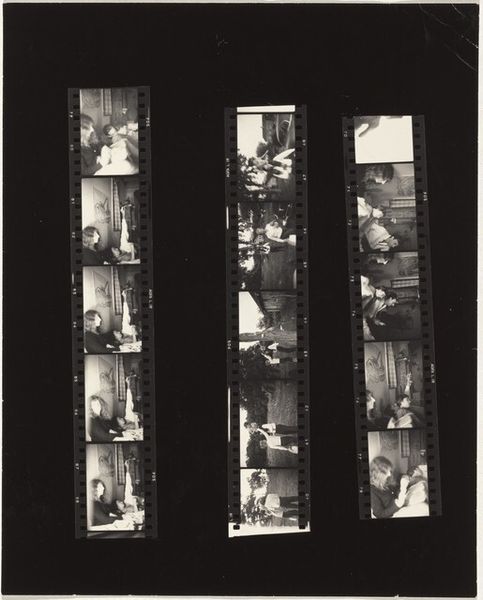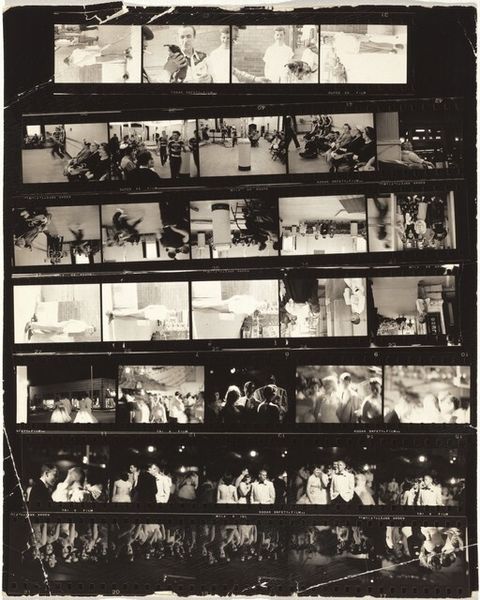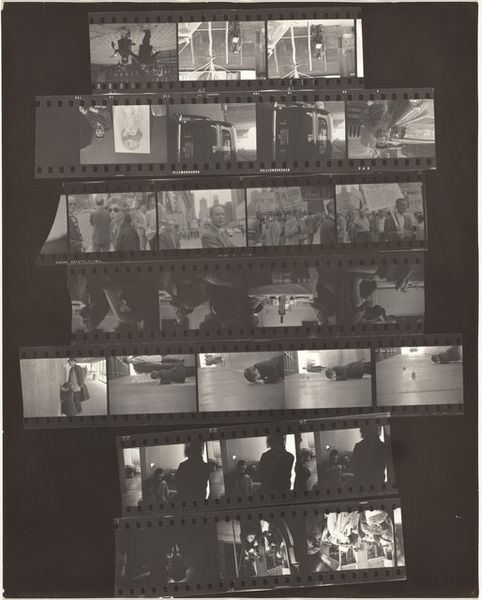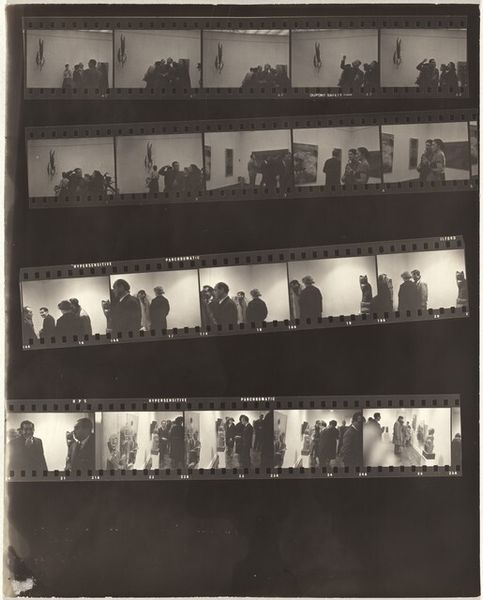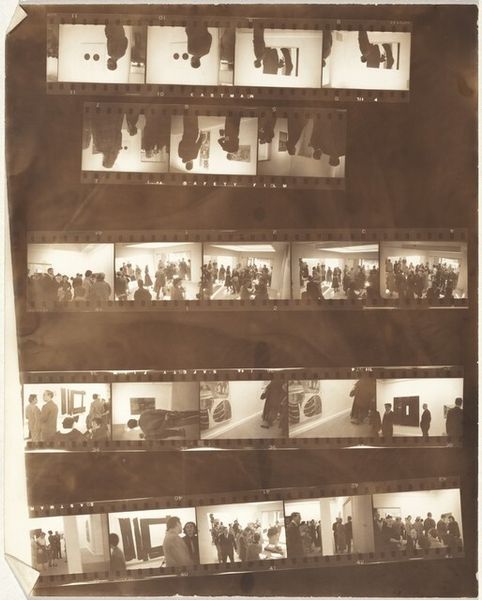
Dimensions: sheet: 20.4 x 25.3 cm (8 1/16 x 9 15/16 in.)
Copyright: National Gallery of Art: CC0 1.0
Editor: So, this is Robert Frank’s "Carnival—Utah or Idaho," a gelatin silver print from 1956. There's a large group of people in the background and in the foreground something that seems like a shrouded figure. There's this kind of tension or maybe a sense of unease throughout. How do you interpret this work within its historical context? Curator: It’s a fascinating image to consider in relation to 1950s America. Frank's work is crucial in understanding the socio-political undercurrents of that era. What you perceive as unease is precisely what he aimed to capture: a critical look at American society. Editor: So it's not necessarily meant to be a straightforward depiction of a happy carnival scene? Curator: Precisely. Consider the carnival setting itself—a space of supposed joy and communal celebration. Frank disrupts this expectation. How does this carnival, supposedly representing Americana, contrast with, say, Norman Rockwell’s depictions? Editor: Well, Rockwell is idealized. Here, there’s something...off. Is the draped figure symbolic of something larger about American culture at the time? Curator: Exactly! It's a representation of hidden aspects within that very culture. Think about issues of race and class that were often masked during this period. Frank brought those hidden realities to the surface. He shows us what institutions and popular media wanted to hide. Do you see anything else interesting? Editor: The people in the background seem so distant. They are observing but also detached. So, Frank’s lens offers a counternarrative, right? Curator: Yes, it challenges the dominant narrative promoted by mainstream media. This detachment echoes a critique of conformity and social issues during a supposedly prosperous time. It forces the viewer to question the authenticity of American ideals and celebrations. Editor: It's fascinating how a single photograph can contain such layered meanings and spark conversations about a whole era! Curator: Absolutely! Art often serves as a mirror, reflecting not just what society wants us to see but also its hidden anxieties and contradictions. Frank held up that mirror, perhaps a bit distorted, and revealed a more complex reality.
Comments
No comments
Be the first to comment and join the conversation on the ultimate creative platform.

